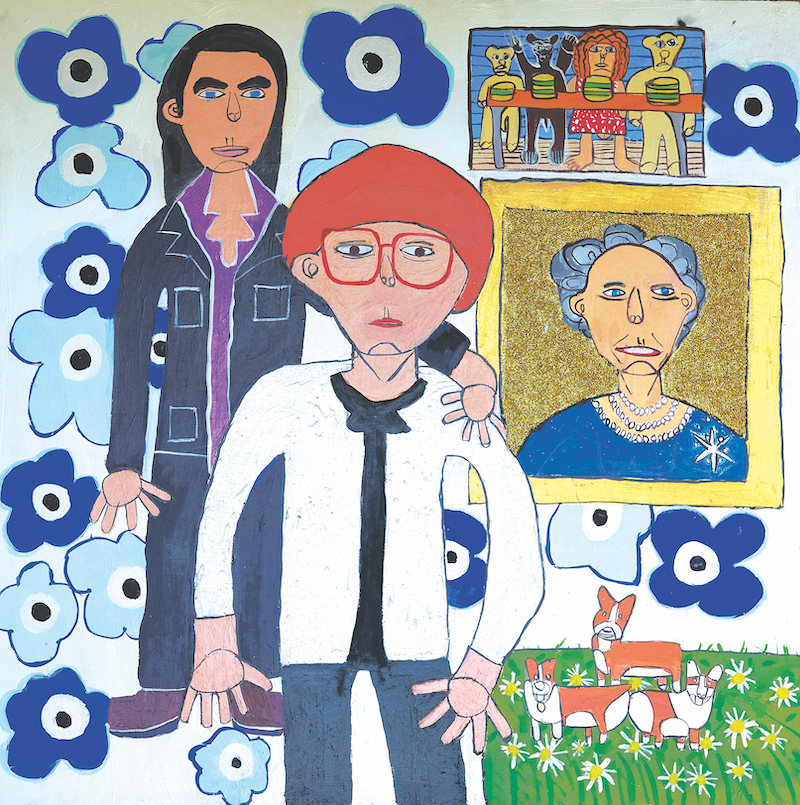Discipline and an irresistible pull to the canvas are at the heart of Zion Levy Stewart’s colourful art practice. For the last 20 years, the prolific Mullumbimby-based painter hasn’t missed a single day in the studio, and his creativity never seems to wane.
He has the incredible ability to distil detail, capturing the essence of a scene or subject with just a handful of lines and shapes, and an explosion of colour.
Stewart enjoyed drawing as a child, but took a long hiatus from art through his teenage years, not picking up a pencil until he was in his 20s. Stewart has Downs Syndrome, and for a while putting marks on a piece of paper was unbearable.
“He didn’t like the dirty page, so he’d try to rub it out. The art practice seems to open parts of his mind,” says his mum, Christine Levy.
One day a visiting friend requested a portrait, and sitting at the kitchen table he created a drawing with a remarkable likeness to his subject. People were so enthusiastic, and in turn Stewart gained confidence. When others sat for portraits, Stewart delighted his subjects with his joyful portrayals.
Over the next two decades, Stewart’s natural talent blossomed into a serious art practice. He paints constantly, with incredible discipline. Each day, following activities in the community, he spends the afternoon in his studio, painting with the television playing. His daily outings inform his work, and he also draws in cafes, at the beach or in the bush.
Stewart often paints with a two-dimensional perspective, which at first glance gives the works an innocent quality. But his depictions are the result of decades of practice and carefully honed skill.
With just the right shape and angle of the eyes, or with the turned-up corner of the mouth, the likenesses are unmistakably photographer Polly Borland, musician Nick Cave or Walangari Karntawarra.
The latter painting of the Aboriginal elder, artist and cultural teacher, titled My Colourful Friend, was entered into the Archibald Prize and selected to hang in the Salon des Refusés at SH Ervin Gallery, Sydney.
Harking back to his early childhood drawings which frequently portrayed the nude human form with anatomically correct genitalia and body hair, Stewart’s contemporary paintings often illustrate the human body beneath the clothing.
The expression reflects his process, which is to draw the forms in pencil first, then paint over in acrylic, then retrace from memory the original drawings over the paint using line details with a brush.
Stewart is surrounded by inspiration in his native Northern Rivers, evident in his bright streetscapes of local towns, their inhabitants, and the diversity of animal life. “It’s a nice place in paradise,” he said of the home that inspires his work. “I love it here.”




